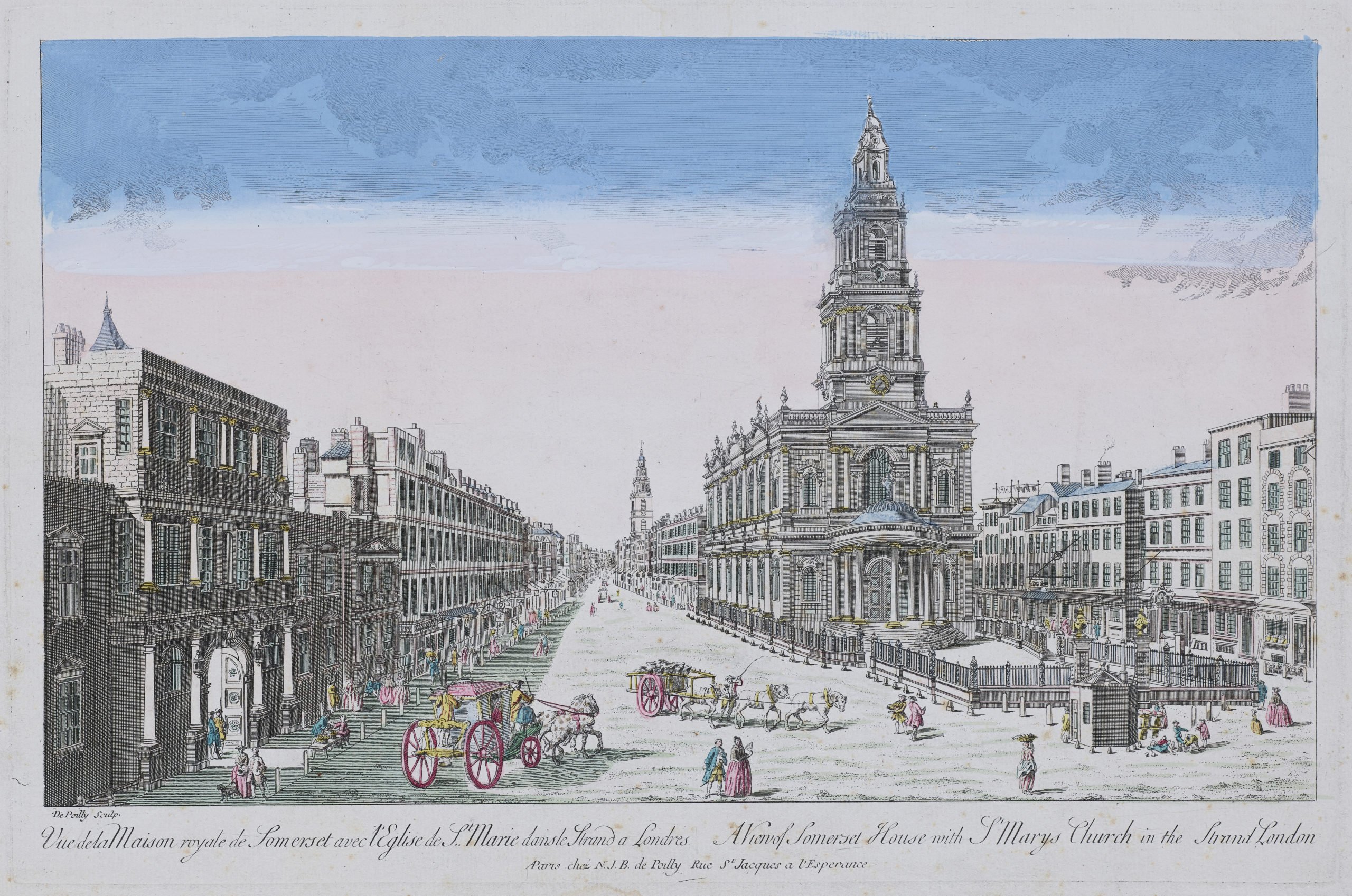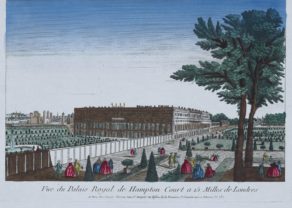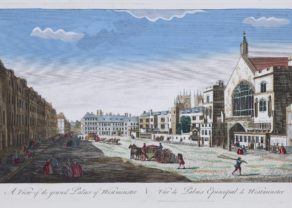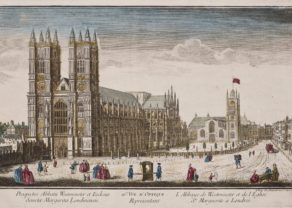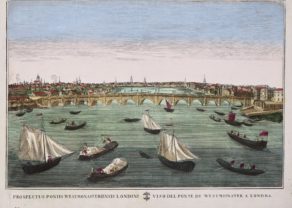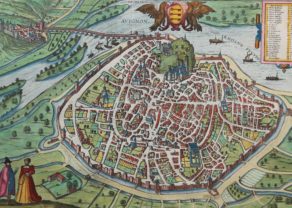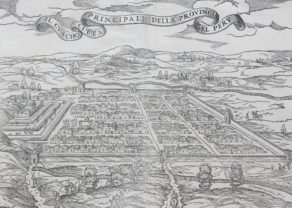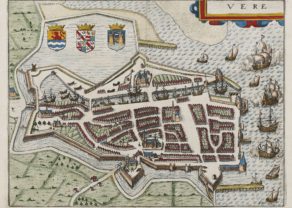Sommerset Palace and Church of Saint Mary (Strand, London) – Vue de la Maison royale de Sommerset avec l’Eglise de S. Marie dans le Strand a Londres
Detail
Date of this view: ca. 1760, Paris
Dimensions (not including margins): 25,5 x 39 cm
Condition: good. Sharp copper engraving. Original colouring. Wide margins. Three water light stains on upper and lower margins, just affecting the border frame. Some marginal faint brown spotting hardly visible.
Condition rating: A
Verso: blanc
In stock
Optica view of Sommerset Palace (London)
In the eighteenth and nineteenth centuries there were many popular specialty establishments in Paris, Augsburg and London which produced optical viewing devices and special engravings to be viewed through them. In the 18th century the optical print or vue optique came into existence, whose exaggerated converging lines were intended to produce the optical illusion of deep recession. The viewing devices for which these perspective prints were produced consisted of a lens and a mirror, this requiring the use of reversed or mirror-image pictures.
A naively executed, lively reversed optical view of old Somerset House in the Strand with the church of St. Mary le Strand in the middle of the road. The first Renaissance palace in England, Somerset House was begun in 1547 as a splendid London home for Lord Protector Somerset, but Somerset was executed only 5 years after construction began and while still unfinished the building passed to the Crown. It subsequently became a residence for the Stuart royal widows. Inigo Jones died here in 1652 while working on the building and Oliver Cromwell lay in state in 1658. After William and Mary came to the throne in 1688 the palace gradually fell into disrepair until it was demolished in 1775 and the present classical structure by Sir William Chambers built. The twelfth century church of St. Mary le Strand situated in the centre of the road, was destroyed by Protector Somerset in 1549 to make way for Somerset House. He promised to rebuild but never did, and parishioners had to use the nearby Savoy Chapel for nearly two hundred years. In 1714-17 the present small baroque church was designed by James Gibbs, the church, inspired by his studies in Rome, was Gibbs’ first public building and gained him great reputation. Unfortunately, the church is now crumbling due to the combined effects of time, weather, heavy traffic and the blast of a wartime bomb.
Related items
-

Royal Palace of Hampton Court – Vue du Palais Royal de Hampton Court a 15 Miles de Londres
by François ChereauPrice (without VAT, possibly to be added): €550,00 / $610,50 / £489,50 -

Westminster Palace – Vüe du Palais Episcopal de Westminster
by N.N.Price (without VAT, possibly to be added): €700,00 / $777,00 / £623,00Extremely rare
-

Westminster Abbey – Prospectus Abbatu Westminster
by François DaumontPrice (without VAT, possibly to be added): €500,00 / $555,00 / £445,00 -

Westminster Bridge
by N.N.Price (without VAT, possibly to be added): €500,00 / $555,00 / £445,00
